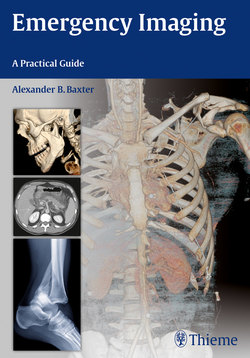Читать книгу Emergency Imaging - Alexander B. Baxter - Страница 51
Оглавление37
2Brain
evident over the nondependent frontal lobes and tends to have a peaked appear-ance (Mount Fuji sign).
Most cases of pneumocephalus resolve spontaneously and can be observed. An-timicrobial therapy is indicated to pre-vent meningitis when a disrupted sinus or mastoid air cell communicates with the intracranial cavity. When associated with neurologic deterioration, tension pneumo-cephalus can be treated with burr hole de-compression (Fig. 2.13).
◆Pneumocephalus
Intracranial air is always seen after crani-otomy and also occurs in a small percent-age of head trauma patients. If a skull base or calvarial fracture traverses one of the facial sinuses or the mastoid air cells, air is often present in the subdural or subarach-noid space. Rarely, a dural laceration can act like a one-way check valve, permitting inflow of air, but preventing its egress. By this mechanism, intracranial air pressure can exceed tissue pressure and compress the brain. In the supine patient, this is most
Fig. 2.13a–fa–d Pneumocephalus following facial trauma with orbital roof and ethmoid fracture. Small amount of air anterior to theright frontal lobe, between the ethmoid bone and the olfactory cortex, and within the right superior orbit. This air is not under tension, but it indicates that the skull base periosteum has been breached and that the subdural space communicates with one of the facial sinuses (in this case the eth-moid air cells). The patient is therefore at increased risk of CSF leak or meningitis.
e,f Tension pneumocephalus due to temporal bone fracture. Bifrontal subdural air collections with mild compression of the frontal parenchyma. Opacied left mastoid air cells are consistent with an acute tem-poral bone fracture. Air in the cisterns and left sylvian ssure indicate arachnoid injury.
